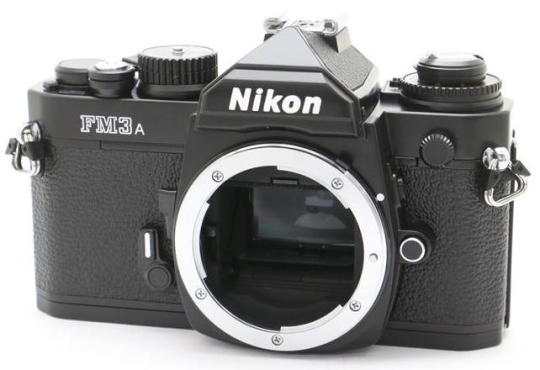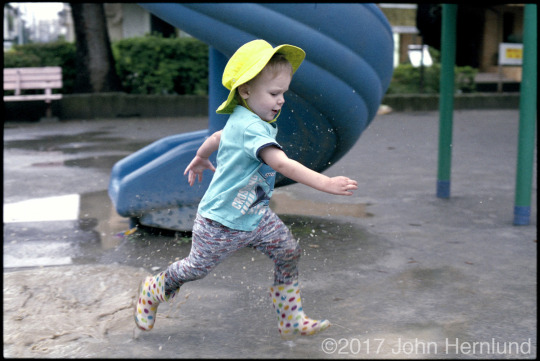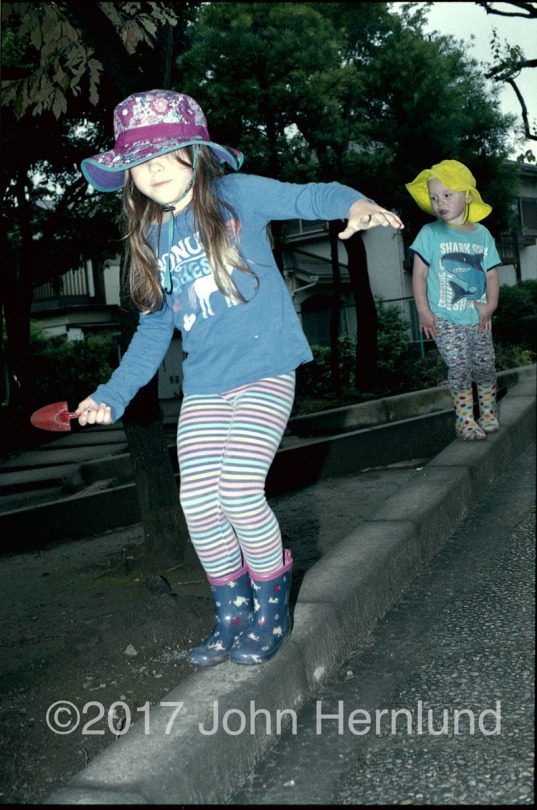#anyway. next up is a lever for that slot bit. a switch. and a set of buttons
Explore tagged Tumblr posts
Text
today's progress on the comic has been entirely 3 modeling the interior of the escape pod so i can draw it a million times way easier
ive been working on it for 4 hours and i have. this

#braindumps.txt#the tutorial series i watched last week was genuinely so helpful#but my god#i forgot how slow Doing Things is in programs u dont know#anyway. next up is a lever for that slot bit. a switch. and a set of buttons#so i can clone all three of those things all over the scene#i still have the overhead console and the room itself#and i want to model the mop and the janitor cart so i can draw them easy too#its slowly getting quicker its just still Extremely Slow
22 notes
·
View notes
Text
Early Impressions of the Nikon FM3a

Background
I enjoy very much the feeling of shooting film, and using classic camera equipment from the glory days of Japanese craftsmanship. I derive a great deal of enjoyment from film cameras that I do not feel when shooting with modern DSLRs, even though digital cameras are vastly more practical (and considerably less expensive). And I live in Tokyo, which is literally a mecca for photography and camera equipment. There is a huge thriving used market that I love to explore and acquire items for my favorite hobby.
I often shoot film with a Nikon F3HP, and also use a variety of other Nikon film cameras (both manual and electronic). I have a collection of manual Nikkor lenses (28/2.8 Ai-s, 50/1.4 Ai-s, 55/2.8 Ai-s, 85/1.8 Auto-H, 135/2.8 Ai, 80-200/4 Ai-s) that I mostly use with these older film cameras, although they sometimes find their way onto a DSLR. I also have a cool drawer in my refrigerator at home that is full of various film stocks, ranging from monochrome to negative color to positive color. And living in Tokyo, when I am not too busy, I can get developing and printing services at some of the world’s finest labs.
Although I already use the F3, I’ve also been looking for the perfect all mechanical film camera for a while. I’ve been considering the F2AS, but finding a quality copy of this classic is not trivial. In any case, since I’ll eventually own every classic Nikon body, it was inevitable that I would eventually own a copy of the FM3a, considered by many Nikon fans to be the pinnacle of the classic style of SLR, but which was produced relatively recently (up until 2006). It is said to be the best of both worlds, combining both an electronically and mechanically controlled shutter system, stepless metering in aperture priority, advanced TTL flash capabilities with a regular hot shoe, many of the best features of the F3, and the same classic Nikon build quality that means the camera will be around for many years (if not decades) of service. Could this camera live up to all of the hype?
First Roll
After purchasing a pristine copy of the FM3a (black version) from my favorite shop in Japan (Map Camera), I loaded a 36 exposure roll of Fuji Superia Xtra 400 negative color film, a relatively cheap film with moderately good colors and grain that is available everywhere in Tokyo. I began by shooting my 2 young kids, taking them to the local playground on a relatively wet and rainy day in October. All shots were taken with the FM3a and 50/1.4 Ai-s manual lens at apertures ranging from f/1.4 to f/4. I also shot some TTL flash with a SB-25.
The first thing I noticed is that when I loaded the film, the take-up spool in the FM3a has a very shallow/narrow slot to insert the end of the film leader. It is significantly smaller than the older style of spools, which allowed about a centimeter to be inserted into a somewhat deeper slot. My initial thought was that this could be a hassle to load film, but to my surprise it actually wasn’t so bad, and within a few seconds the spool was winding the film and it was secured on the sprockets...closing the door and tightening the slack on the rewind reel, I advanced one frame and started making exposures.
Since I was shooting advance frames (00 and 0), uncertain whether they might turn out, I took several shots using the mechanical shutter alone by selecting shutter speeds of 1/1000, 1/500, and 1/250. Since Map Camera has a 1 week grace period for returns, I wanted to be sure that every mode was working as it was supposed to, so I planned to use every conceivable function.

Shown above is a shot of my 2-year-old son running through a deep puddle at the park. I set the aperture to f/4 and it metered around 1/125, barely fast enough to catch an action shot but allowing me to get better depth of field and anticipate focus as he ran past.
I also tried several shots using flash, and the results were instructive and useful. In aperture priority mode it always syncs at 1/250 sec, which is good enough to freeze motion, but it may be too fast to properly expose dimly lit backgrounds. You can see this in the result below, my daughter was strongly illuminated compared to her background. Although my son and the surroundings caught a little flash, they are relatively dim owing to the inverse-square intensity fall-off with distance from the source. Next time I shoot with flash I will try manual flash settings to better expose the background, and tinker with modes on the flash itself.

Compared to the F3
I feel as if this camera should be compared to the F3, which is also considered by some to be the pinnacle of Nikon manual film SLRs.
With the FM3a I enjoy having (1) the option to shoot with a purely mechanical shutter at (2) speeds up to 1/4000 sec, whereas the F3 is electronic-only and maxes out at 1/2000 sec. I also like (3) the mechanical needle to display the light meter reading, rather than the primitive dim LCD of the F3. The (4) regular hot shoe mount atop the viewfinder is far easier to use than the F3 flash mount, which requires an adapter and places the flash over the film rewind reel. I have already enjoyed the (5) the AE-Lock button on the back right next to the film advance lever, it is very easy to reach and somehow more comfortable to use than the front button on the F3. Also the (6) -1EV flash compensation button on the FM3a body to the left of the lens, although it is not so easy to reach while shooting it is a highly practical addition. Of course the FM3a is also (7) lighter and (8) slightly smaller than the F3 (HP), thus easier to carry in a bag with any standard lens mounted. And while I’m sure it is a very minor difference, I was noticing that (9) the metering on the FM3a in aperture priority seemed to be spot on the money, and I wonder if this is a matter of technological improvements, the stepless metering system in the FM3a, or my lack of scientific comparison and just basing this on a limited number of photos so far. Finally, the (10) film spy window in the rear door is great to see which film is loaded, rather than guessing from the ISO setting or putting a torn piece of film carton in the holder on the back.
In which ways do I prefer the F3 over the FM3a? The biggest practical difference is the lack of a purely mechanical T (timer) setting on the shutter speed dial of the FM3a. And the F3 shoots as slow as 8 seconds on the dial, while the FM3a bottoms out at 1 second. Clearly the F3 is going to be better for long exposures than the FM3a (although it does have a B setting, so it is not impossible to do so using a shutter release plunger cord attachment). Another persistent difference that jumps out is the beautiful quiet sound and feel of the mirror slap and shutter release on the F3, which is butter smooth and has a solid mechanical feel to it. It is extremely enjoyable, I recommend feeling this if you’ve never shot a F3. The FM3a, on the other hand, is quite sharp and loud. I gather that this is probably an artifact of the powerful shutter mechanism that combines both electronic and mechanical controls, and fires at speeds up to 1/4000 sec. Nevertheless, the FM3a is not a camera that you can shoot without being heard, while the F3 is a bit more laid back (though by no means the quietest either). The other thing that comes to mind is the power switch on the F3 vs. the FM3a. The F3 uses a simple switch under the shutter release, and is easy to flip on and off (though easy to forget to turn it off). On the FM3a the film wind lever has to be pulled back out to about the 30˚ position, this is the camera’s “power on” and it won’t fire unless the lever is pulled back into this position. The thing is, it isn’t just a slight protrusion outwards, it definitely pokes out. Since I am left-eye dominant and use my left eye for the viewfinder, I need to angle my face away from the camera while shooting, in order to keep the lever out of my right eye. On the other hand, this does make it quite easy to advance the film lever, though the F3 also has beautiful lever action and is no slouch either.
Summary
These are my impressions so far, after using it for just a couple weeks. A week ago I loaded some Ilford FP4 Plus 125 monochrome, which is really fun in the daylight with an orange filter. But that was just before the weather turned to crap. Anyways, it will clear up, and I am eager to see how well it works in black and white exposures, with and without color filters. My thoughts may change/evolve more in the future, but right now I am very happy to shoot this FM3a, and I can already tell that it will be a close friend.
0 notes